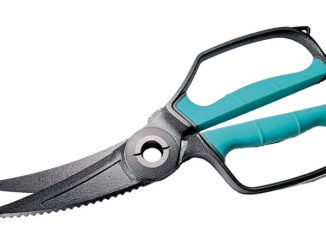
One of the many blessings of Louisiana fishing is that there are no closed seasons. Great fishing is available any month of the year, but February is ranked by many anglers as 12 out of 12.
But as long as the weather is safe for kayak fishing, there’s no reason to stay home — and if it’s not, take advantage of the time to get those rigging and maintenance projects done.
So far, the 2014-15 winter has been mild and fishing has been fantastic. The fish have remained in fall patterns and are easily accessible to kayak anglers.
The few minor cold fronts that have hit since November have the specks and reds into winter patterns and make for great kayak fishing action.
Trout fishing in February is predictable, and what many consider a slow month can really produce fantastic speck action. On colder days, knowing where the trout will be and how they will act under specific conditions is the key to successful winter trips.
The interior marshes of South Louisiana offer prime winter habitat within easy paddling. The mix of shallow lakes and ponds with nearby deep natural bayous, pipelines and dead-end canals provide the varied depths and current where trout orient, depending on the conditions.
Water temperature is often the most-valuable key to locating trout in the winter. The fish are likely in the area, but you might be missing them by a little as a few yards.
Many kayakers will move from an area believing there are no fish around. However, a simple change in techniques and a short move might be all that is needed.
“I was fishing the middle of a deep canal where the trout were stacked last week, but didn’t get a single bite. However, instead of leaving, we moved only 50 yards and found that they were holding on a nearby flat,” said Al Siener, an avid winter-time kayak fisherman.
Although it was a cold day, the bright sun had warmed the water temperature a few degrees, and the fish moved shallower and began feeding.
“A change of only a couple degrees in the water temp can move the fish and start them feeding,” Siener added.
While kayak fishing is generally considered a minimalist sport, many successful kayak anglers are equipping their ’yaks with fish finders. Although not really necessary when fishing scattered fish in shallow marshes during summer months, they can be invaluable trying to locate concentrated fish during the winter.
The combination of depth and water temperature is often the most-important factor in finding fish in February. Fish will stage in areas where they have access to both deep and shallow water. They move back and forth between these areas with changes in current and water temperature.
A distinct advantage of winter fishing in a kayak is the ability to access shallow water. Don’t confine your winter fishing efforts to only the deepest of areas. Trout certainly stack up in deep holes, but also regularly move onto the flats on the warmer days.
Also, the stacked fish are often the smaller, barely legal ones and the larger fish are generally the first to move to the shallows.
Although live shrimp can be sold year round, chances are you won’t find any available during February. Artificial lures and live minnows are your best bet.
You can still use your favorite summertime lures and techniques; just slow them down. Pop that cork a little slower and crawl a tight-lined jig slowly across the bottom. Bites are usually light, so set the hook anytime you feel something a little different.
One mistake often made is abandoning topwater baits during the winter. However, at times when the weather has stabilized between fronts and the water warms, you will be pleasantly surprised at how willingly big trout will slam a topwater plug.
While fantastic fishing can be had in February, not all winter days are good. There are just some days when the cold is brutal, the wind is howling and the water is gone.
Instead of grinding out a miserable day on the water, drag the kayak into the garage and get it ready for better days to come. Kayaks don’t require a lot of maintenance, but a little TLC and comfort rigging makes for better fishing.
Start by going through the kayak checking all hatches, bungees and hardware. Tighten screws, inspect seals and repair or replace anything that needs attention.
A good cleaning and application of sun protectant will keep the ’yak looking new and wards off the fading effects of the sun.
Take the time to think about previous trips and those thoughts you had of “wouldn’t it be nice if I had a rod holder here,” or “if I just had an anchor trolley, I’d be in a better position to catch these fish.”
While most manufacturers build a lot of fishing-friendly features into their kayaks, there are always a few aftermarket items that make your kayak fishing experiences better. Little additions and modifications to your kayak go a long way toward fishing success.
Don’t overlook you fishing tackle and gear. Change out worn line and replace rusty hooks. Go through tackle boxes and remove those lures that never saw the water. Repack your boxes and concentrate on your confidence lures and carrying a few of each, in varied colors and sizes.
Kayaks offer minimal storage space, and there’s no benefit in carrying items that won’t be used.
Clean and lubricate your reels, and check rod guides for signs of bending or cracked wrappings.




